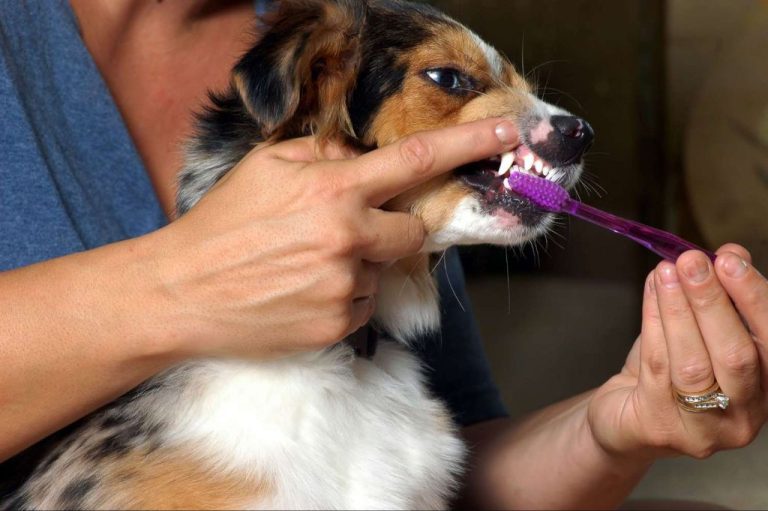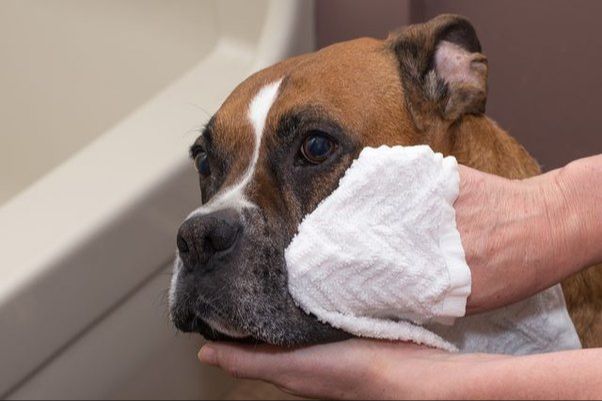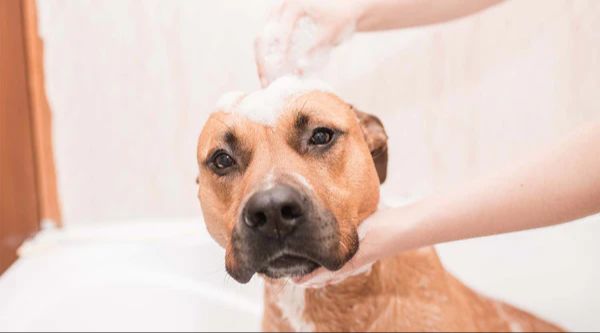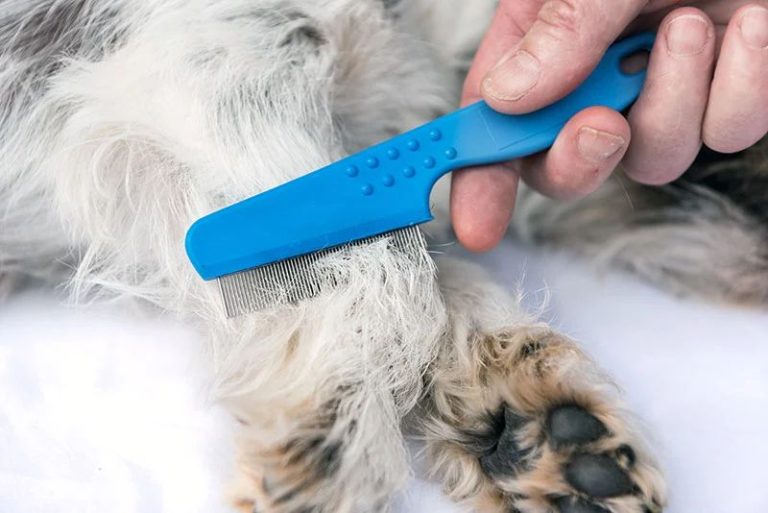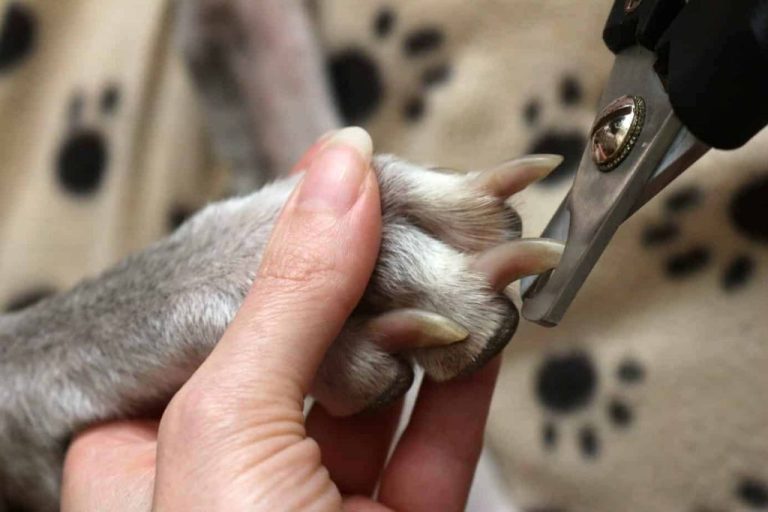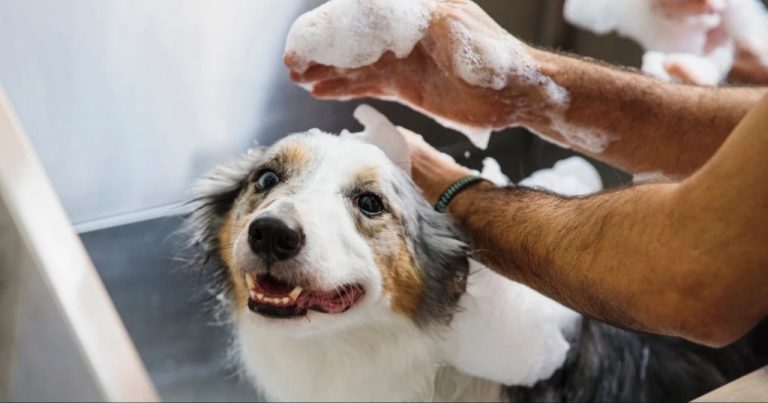Maintaining A Clean And Tidy Dog Grooming Area At Home
Maintaining a clean and sanitary grooming area at home is incredibly important for the health and safety of dogs. Proper hygiene helps prevent the spread of bacteria, parasites, and infections that can be harmful to both pets and humans. Additionally, a tidy grooming space allows groomers to work efficiently and effectively.
According to the Freeport Veterinary Hospital, “Regular nail trimming or nail maintenance, keeping their coat clean and matt-free, and brushing their teeth daily or several times a week are all part of the grooming process. We want to make sure that they maintain good dental hygiene, good body hygiene, and healthy nails.”
This article will provide tips and guidelines for setting up and maintaining a clean grooming area at home. Topics covered include choosing a location, types of grooming tables and equipment, flooring and cleaning supplies, as well as daily and weekly cleaning routines.
Choosing a Location
When setting up a dog grooming area at home, one of the most important considerations is choosing the right location. The ideal spot should have adequate space, proper lighting, and good ventilation. According to How To Prepare a Home Dog Grooming Set Up, you’ll need enough room for a grooming table, supplies storage, and to move around comfortably while working. Allow at least an 8×10 foot space for the grooming area itself.
Proper lighting is essential for being able to see what you’re doing during the grooming process. Both natural and artificial light sources work well. Position near a window or install overhead lighting above the grooming table. Make sure the area is well-ventilated too. This will help keep odors at bay and provide fresh air circulation while grooming.
When selecting the location, also consider noise levels, privacy, and accessibility. Pick an area that is quiet, private, and easy to access for bringing dogs in and out. Garages, laundry rooms, basements, and enclosed porches are often good choices. Hard surface flooring like tile also helps keep the space clean.
Grooming Table
The grooming table provides an elevated and stable surface for grooming your dog. When choosing a table, consider the height, material, and texture of the surface.
The ideal height allows you to stand comfortably while grooming. Standard tables are usually 32-36 inches high, but adjustable options allow customization based on your height and your dog’s size. Taller tables around 40 inches work well for large dogs (Petedge).
Sturdy materials like steel, aluminum, and high-density polyethylene plastic withstand regular use and last over time. The surface should have a non-slip, rubberized texture to prevent sliding and secure your dog in place.
Opt for a table with adjustable features like foldable legs, removable trays, and multiple grooming arms. This allows for easy storage and flexibility for different grooming needs.
Grooming Arm & Loop
A grooming arm and loop is an essential piece of equipment for any at-home grooming setup. The arm clamps onto the grooming table and holds a noose or loop that goes around the dog’s neck to keep them stable and secure during grooming (source). There are a few key benefits of using a grooming arm and loop:
It keeps the dog safely in place. Dogs naturally don’t enjoy staying still for extended periods, so the arm prevents them from jumping off the table or moving around too much during grooming. This allows you to fully concentrate on the grooming task rather than trying to contain a wiggly dog.
It allows you to control the dog’s movement and position. The arm lets you adjust how the dog is oriented on the table, making it easier to reach different areas. You can turn the dog or lift the front/hind legs as needed.
It reduces stress and makes grooming more comfortable. Being unable to freely move around can cause dogs anxiety and stress. The grooming loop applies gentle pressure that has a calming effect for some dogs, making the process more relaxing.
There are a few types of grooming arms. Fixed arms don’t adjust in height or angle. Adjustable arms allow you to customize the height and position. Some have multiple attachment points for flexibility. Consider your dog’s size and temperament when selecting the right arm for your table (source).
Flooring
The flooring in your dog grooming area needs to be easy to clean and non-slip. According to Floorings for Dog Groom Areas, concrete flooring can be difficult to keep clean long-term even if sealed and stained. Instead, vinyl flooring is often recommended as the best flooring for groomers because it is waterproof and allows for easy cleaning of hair, dirt, urine, and other spills that may occur during grooming.
Be sure to install vinyl plank flooring rather than sheet vinyl, which can wear and tear over time. Some good options recommended at Pet Groomer Forums are luxury vinyl plank or vinyl wood plank flooring. These mimic the look of real wood or stone but have a durable, water-resistant vinyl surface.
It’s also important to use anti-slip rubber mats in key areas like under the grooming table, bathing area, and anywhere the dogs will walk when wet. Choose mats made of nitrile rubber or PVC that have gripping surfaces to prevent slips and falls.
Cleaning Supplies
Keeping brushes, clippers, tables, and other grooming tools clean is essential for maintaining a sanitary grooming area and preventing the spread of dirt, germs, and parasites (Source). Regular cleaning also helps tools last longer and function properly. Use pet-safe disinfectants and cleaners designed specifically for animal grooming.
For brushes, many groomers recommend using a brush cleaner like Les Poochs brush shampoo or a 50/50 vinegar and water solution to break down oils and residues (Source). Rinse thoroughly after soaking and allow to air dry completely. Disinfect metal tools like clippers and scissors by wiping down with grooming wipes or sprays containing chlorhexidine or accelerated hydrogen peroxide. Vacuum hair daily with a powerful shop vacuum to keep the area clean.
Hair Management
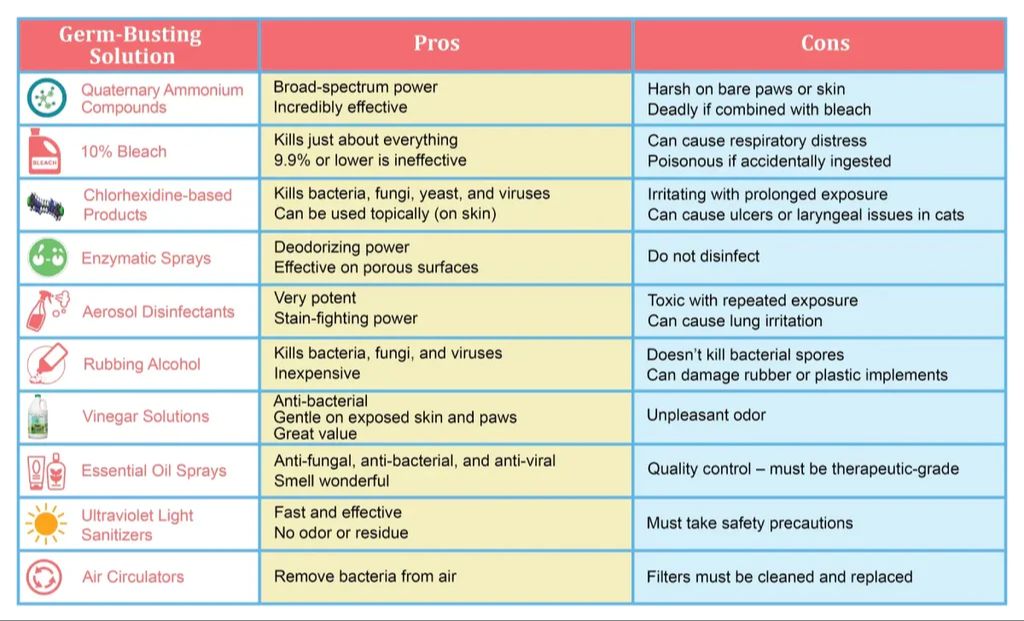
Keeping shed hair contained and cleaned up is crucial for maintaining a tidy grooming area. Collecting shed hair as it falls and using lint rollers can help dramatically reduce the amount of loose hair in your space.
Use a non-slip grooming table mat made of rubber or silicone to help the hair cling and stay in place while brushing and clipping. These mats make it easier to gather and dispose of the hair neatly.
Line the floor under and around the table with a disposable cloth, towel or puppy pad to catch falling hair. Discard after each grooming session.
Use a shedding blade when brushing to capture loose hair directly into a container or trash bag. Rubber curry brushes also help grab shed hair.
Vacuum the floor thoroughly after each use, using the hose attachment to get into corners and crevices. Use vacuum attachments like rubber brushes that can attract dog hair.
Keep a lint roller handy to quickly clean up hair on surfaces, mats, your clothes etc. Tape style rollers are useful for picking up hair from textured surfaces.
Wipe down the table, tools and other surfaces frequently with a damp microfiber cloth. The moisture helps lift hair for cleaning.
Check fabrics like mats, blankets or beds regularly and machine wash when needed. Use the lint trap to catch shed hair.
Take your dog outside to brush and blow out their coat when possible, so loose hair doesn’t accumulate inside.
Change HVAC air filters monthly or bimonthly during shedding seasons.
Disinfecting & Sanitizing
Proper disinfecting and sanitizing is crucial for maintaining a clean grooming environment and preventing the spread of bacteria and disease (Source: https://www.merryfield.edu/sanitation-aspect-grooming-services/). Grooming surfaces should be thoroughly disinfected and sanitized between each dog. Bleach solutions, quaternary ammonium compounds, accelerated hydrogen peroxide, and other EPA-registered disinfectants can be used. It’s recommended to disinfect surfaces at least once a day or after any visibly soiled incidents.
Some best practices include (Source: https://caninecouturegrooming.com/uncategorized/the-importance-of-a-clean-and-sanitized-grooming-environment/):
- Disinfecting grooming tables, tubs, tools, and other surfaces between each appointment
- Changing out dirty towels, smocks, leashes, etc. after each dog
- Using disinfectant products approved for animal care settings
- Allowing proper contact time for disinfectants to work
- Rinsing thoroughly after disinfecting
Following proper sanitation protocols helps prevent the spread of contagious diseases and protects the health of dogs, groomers, and owners alike.
Organizing Tools & Products
Proper storage and organization is key to maintaining an efficient grooming area. Invest in quality storage solutions like shelving, cabinets, and drawers to keep everything in its place. Use storage bins, baskets or trays to corrall small items like brushes, combs and clips. Mounting slatwall panels provides a way to neatly hang frequently used tools like shears and clippers (Petedge).
Consider installing a grooming arm and loop on the wall near your table to keep clippers and combs within easy reach. Use hooks on the wall or grooming arm to hang leashes and towels. Store shampoos, conditioners and sprays together on a shelving unit or cart. Keep styptic powder, cotton balls and other first aid supplies together in a tackle box or caddy. Invest in quality storage and organization systems to maximize your grooming workspace.
Regular Maintenance
Keeping your dog grooming area tidy requires implementing daily and weekly cleaning habits to stay on top of things. Here are some tips for regular maintenance:
Daily:
- Sweep up loose hairs, nail clippings, and any dirt at the end of each day.
- Spray down and disinfect grooming table, arm, loop, tools, and other surfaces after each dog.
- Empty trash cans and replace trash bags.
- Re-stock any grooming products or supplies that are running low.
Weekly:
- Give the floors a thorough sweeping and mopping.
- Clean inside cabinets and drawers and re-organize if needed.
- Launder grooming supplies like towels, smocks, muzzles, etc.
- Shampoo area rugs.
- Inspect grooming tools and equipment and send out for sharpening if necessary.
Implementing these regular cleaning tasks will prevent dirt, hair, and mess from building up over time. Be sure to schedule and commit to daily tidying and weekly deep cleans for an orderly grooming space. For more tips, see Keeping Your Grooming Station Tidy.

